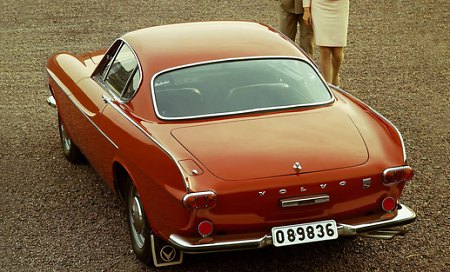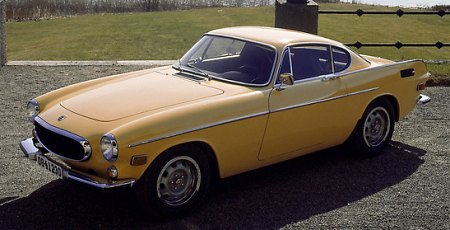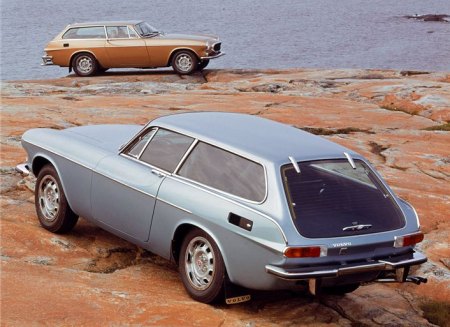 Being known for
practicality, reliability and safety, Volvo has never really built a
sports car or a grand tourer throughout its history. However, in the
early 1960s it came close to do so. The P1800 was a stylish 2+2 coupe
that made people think about a poor man's Ferrari. Its proportion and
its egg-crate grille were reminiscent of the 1956 Ferrari 250GT Boano,
while the sharp tailfins had strong influence from Detroit. The car was
designed by young Swedish stylist Pelle Petterson under the guidance
of Italian design maestro Pietro Frua. Interestingly, Petterson's
father Helmer was the creator of PV444, which brought Volvo the first
mass production success a decade ago.
 The P1800 was built on the platform of Volvo 122S Amazon
saloon, so
its mechanicals were fairly conventional. Its front suspension was
double-wishbone type, while the rear was a rigid axle on coil springs.
Braking was provided by Girling discs up front and drums at the back.
The Amazon's 1.8-liter pushrod four-cylinder engine was tuned up
slightly, running a 9.5:1 compression ratio and fed by twin-SU
carburetors to produce 90 horsepower (or 100 hp gross as known to
American). Although it wasn't powerful, it was known for bullet-proof
durability as it was derived from a Volvo truck engine and had 5
main bearings. The transmission was a 4-speed manual gearbox with an
electrical-operated overdrive, which allowed the coupe to cruise
happily at 90 mph. Outright performance, however, was not as
remarkable as it looked. It topped about 105 mph and accelerated from
rest to 60 in 13 seconds. Likewise, the handling was average due to its
saloon underpinnings.
 Contemporary reviews complained for some ergonomics flaws as
the seats were mounted too low and the dash/steering wheel too high.
The cabin was a little short of headroom due to the low roofline, while
rear seats were suitable to only children or luggage. On the plus side,
the beautiful body work was well built, feeling strong and well
insulated, especially after production shifted back to Sweden in 1964 –
previously, Volvo contracted the assembly to Jensen in Britain, which
subcontracted the bodywork production to another British coachbuilder.
The car was renamed to 1800S (S for Sweden) as a result. Further
changes included a larger, 2.0-liter engine (again came from Amazon) in
1968 and the addition of Bosch electronic fuel injection in 1970. This
brought its power up to 120 hp, top speed to 115 mph and cut 0-60 mph
time to under 10 seconds. It was renamed again to 1800E, where E
referred to the German word for injection. Nevertheless, by this time
its chassis became really outdated.
 In 1971, Volvo followed Reliant Scimitar GTE to introduce an
estate version of the coupe. It was called 1800ES. An extended roof
allowed improved rear headroom (though legroom remained tight) and
luggage space. With the rear seat folded it offered an expansive
loading area. Access to the boot went through a stylish, frameless
glass tailgate. That was one of the first "shooting brakes" appeared on
the market.
Neither the coupe nor the shooting brake was considered to be a good driver's car. In fact, they were quite slow and bulky to steer by the standard of sporty cars. Like many Volvos built before the era of Ford ownership, they were more renowned for reliability and durability. A 1966 coupe holds the world record of driving mileage, clocking a staggering 3 million miles as of late 2013. It rewrites the meaning of "timeless". |